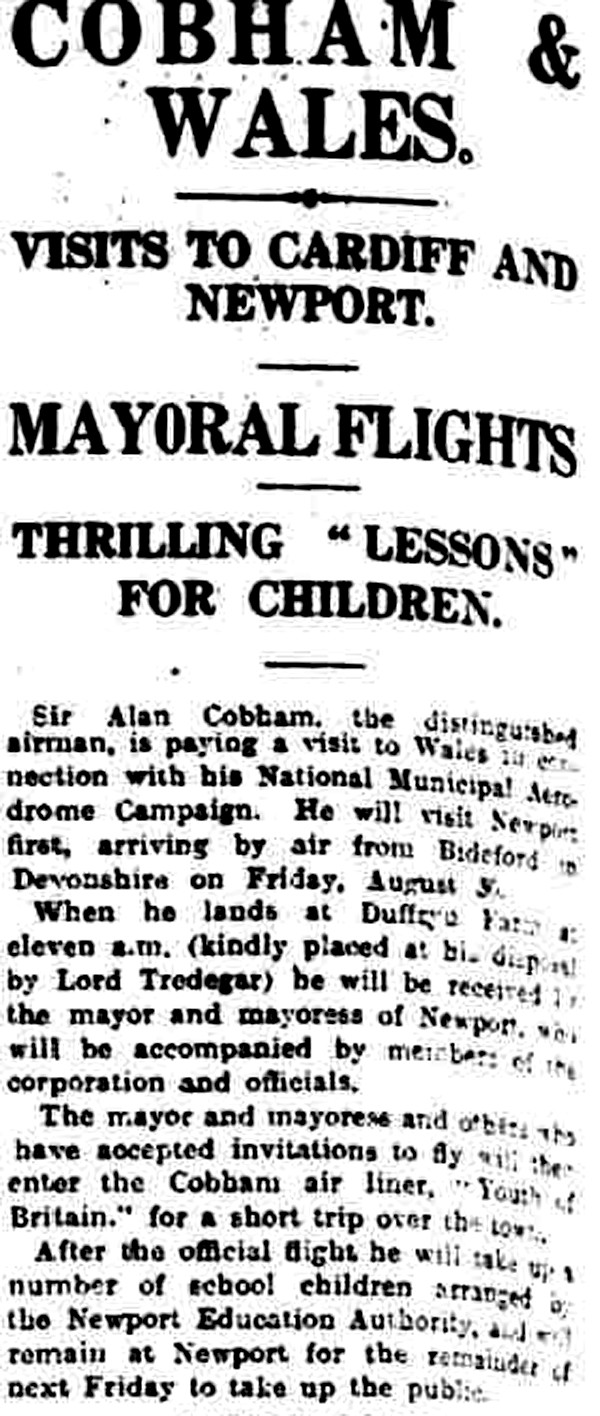Dyffryn Farm
DYFFRYN FARM: Temporary Landing Ground
Location: Just S of the A48/M4, roughly 3nm SW of Newport town centre
On the 30th August 1929, Sir Alan Cobham landed here during his Municipal Aerodrome Campaign, this being his 69th venue. Starting in May his campaign to extol the benefits of towns and cities having municipal aerodromes/airports, ended in October. He had originally planned to visit 107 venues, but due to a couple of crashes and other setbacks, he eventually visited 96 venues - still of course a quite magnificent acheivement.
The aircraft he mostly used was the ten-seater de Havilland DH61 'Giant Moth' G-AAEV, named "Youth of Britain". For most venues his plan was to arrive at around 11.00, then take local dignitaries for a flight around the local area. Due to his fame at that time, a slap-up luncheon was arranged, at the town hall or a grand hotel, during which Cobham would explain his quest to get every town to have such a facility and the benefits to be derived.
He would then take up to forty or more nominated school children for local flights, the costs being met by a then anonymous donor. We now know this was Lord Wakefield of Castrol Oil fame, who had told Cobham he would sponsor flights for ten thousand children during his Tour. Following these flights Cobham would then take fare paying passengers, usually until dusk. Presumably to help offset the costs of the campaign.
A MICHAEL T HOLDER GALLERY
Note: The newspaper article was published in the Western Mail on the 24th August 1929.
Note: The newspaper picture was published in the Western Mail on the 31st August 1929. The last item, the area view, was taken from my Google Earth © derived database.
NOTES: There is of course no way of knowing just how effective Sir Alan Cobham's 1929 campaign was. But, shortly afterwards many aerodromes and regional airports were constructed, with an almost immediate effect in the formation of many regional airlines taking advantage of the opportunities. Perhaps, needless to say, many were short lived enterprises, usually failing to understand the potential passenger traffic that could be generated over several routes. In those days of course the railways were very well established, so most air routes had to either exploit the gaps in the system due to the geography of the UK, or offer regular services giving considerable time saving benefit.
This said, due to typical British weather, the majority were seasonal services.
We'd love to hear from you, so please scroll down to leave a comment!
Leave a comment ...
Copyright (c) UK Airfield Guide























